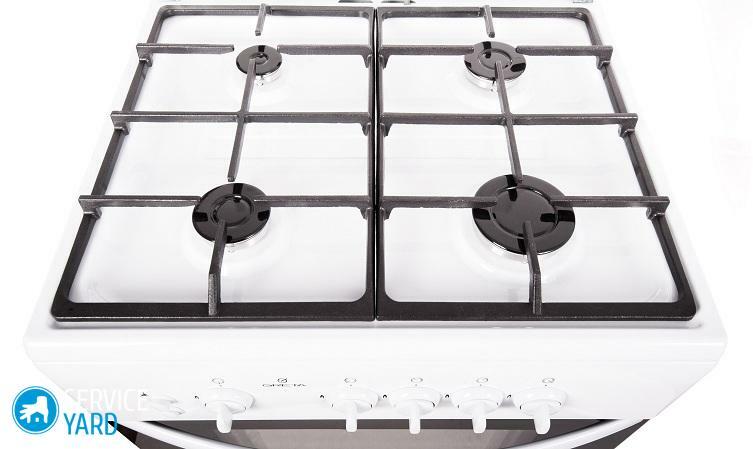Every car owner wants to have a reliable and high-quality battery that would be easy to maintain and worked perfectly under different operating conditions. However, today when buying is difficult to correctly navigate in a large range of products offered by various stores. And if you are not yet an expert in this matter, I would like to know more about what this device represents before you buy. How it works and the principle of its work. What should be - serviced or not served? Is there enough capacity for your car? Will he have a long service life? Which manufacturer should I choose? Far from the last factor in the decision to purchase will play and the price. Let's try to understand all these issues in more detail.
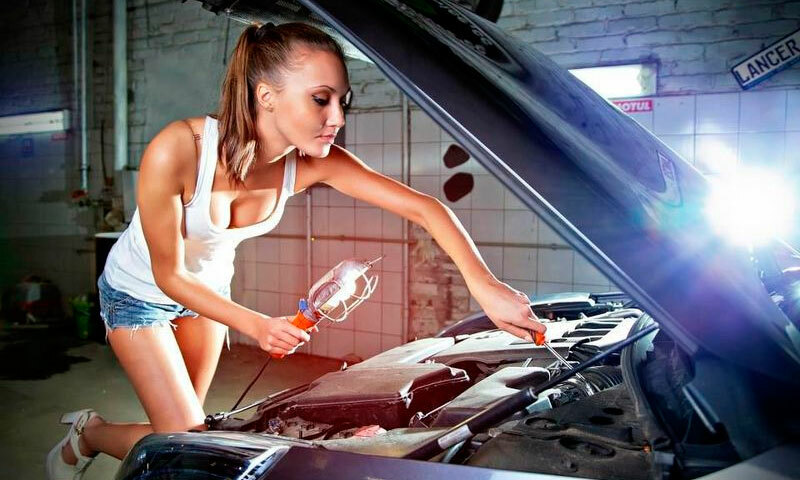
Contents:
- The best battery manufacturers
- Principle of operation and battery device
- Kinds of batteries
- Battery selection parameters
- How much are the rechargeable batteries
The best battery manufacturers - which firm to choose
Russian auto shops offer batteries of various foreign and domestic manufacturers. Many have already been tested and recommended by our drivers. When choosing them, you first need to pay attention to the brand of the company, and then to familiarize yourself with the basic short characteristics of the products.
Among the five best foreign manufacturers of automotive batteries( batteries) in 2016 and 2017, there are such companies as:
- Bosch;
- Varta;
- Exide;
- Kraft;
- Baren.
Among the best Russian manufacturers of batteries is worth noting companies such as:
- TAZ( Tyumen).
- AkTeh( Svirsk).
- Electric tractor( St. Petersburg).
- Akom( Zhigulevsk).
- Russian accumulators( Kursk, Saratov and Podolsk).
In many ways, our products are not inferior to imported ones. Our batteries are well adapted to domestic climatic conditions. They are manufactured using modern equipment and innovative technologies.
When choosing a battery, you should not focus your attention only on the promotion of this or that brand. For completeness of the picture, it is necessary to understand the features of the product: the principle of its operation, the device and the main characteristics.
- See also: Best car batteries
Principle of operation and battery device
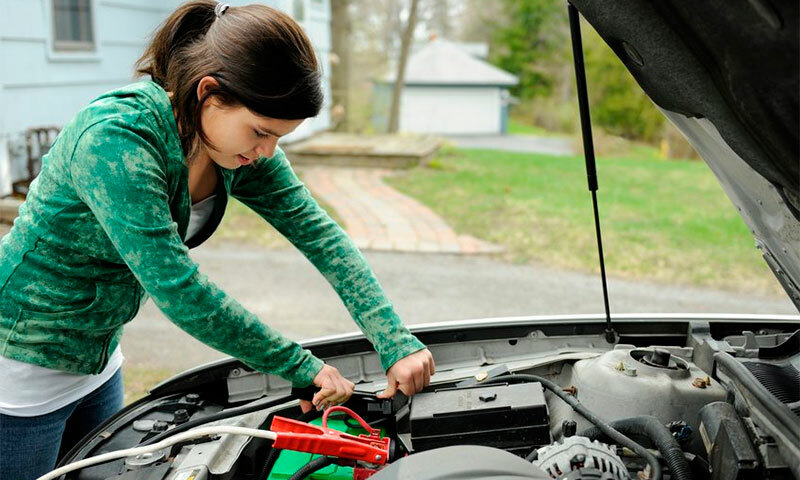
The battery is a device in which by means of chemical processes, electric energy can be generated or accumulated.
The principle of the battery is based on an active reaction between lead plates( electrodes), dropped into sulfuric acid( electrolyte).
The electrical energy is converted into chemical when charging and, conversely, when discharged. This process has a cyclic nature: discharge - charging.
When consumers connect to the battery, a discharge occurs. In this case, the plates interact with sulfuric acid. Water and lead sulphate are formed and the density of the electrolyte decreases.
When the car engine is running, the battery is charged from the generator. During charging, water and lead sulphate are converted again into sulfuric acid and, accordingly, the density of the electrolyte increases.
High voltage when charging the battery significantly reduces the level of electrolyte, and low - does not fully charge the battery, reducing its service life. Therefore, this process must take place under optimal conditions.
The ambient temperature of the battery affects its operation. At high - the corrosion of the electrodes increases. There is a decrease in the battery charge( self-discharge).At low - the density of the electrolyte decreases. In non-operating condition, the battery is gradually discharged.
Using the battery in the car you can:
- Start the engine.
- Provide current for electrical circuits with the engine running, in conjunction with the running generator.
- Provide energy for low-power electrical appliances with the engine switched off.
In cars of various types, most often lead-acid batteries are used. The battery is quite simple. The product consists of isolated jars( smaller batteries).
Since the voltage that is mainly used by cars is 12 volts, the number of cans is only six pieces( each of 2 volts).All of them are connected among themselves in series and are in the same housing.
The main elements of the battery:
- Bank consists of a set of plates( electrodes), isolated acid-resistant separators.
- Electrodes are made of lead in the form of gratings. A porous active substance is pressed into their cells. For the plus plates it is made from lead powder, with an admixture of sulfuric acid, and for the negative add sulfuric acid barium. The plates are charged.
- The battery case is made of acid-resistant plastic. In the tank there are compartments for the installation of cans.
- Electrolyte, made of a mixture of: pure water and sulfuric acid. All this is stuffed into banks. With its help, charged particles move from the electrode to the electrode.
Connect the battery to the electrical equipment using two leads made from lead.
The plus terminal is always thicker than the negative one. This reduces errors when connecting. Their location( polarity) can be either direct or reverse. Direct polarity - plus left, reverse - right.
Modern batteries are equipped with an indicator - "eye", which can be used to judge the charge of the battery. If it is green, then everything is in order.
Battery types
The following types of batteries are on the Russian market:
Serviced batteries
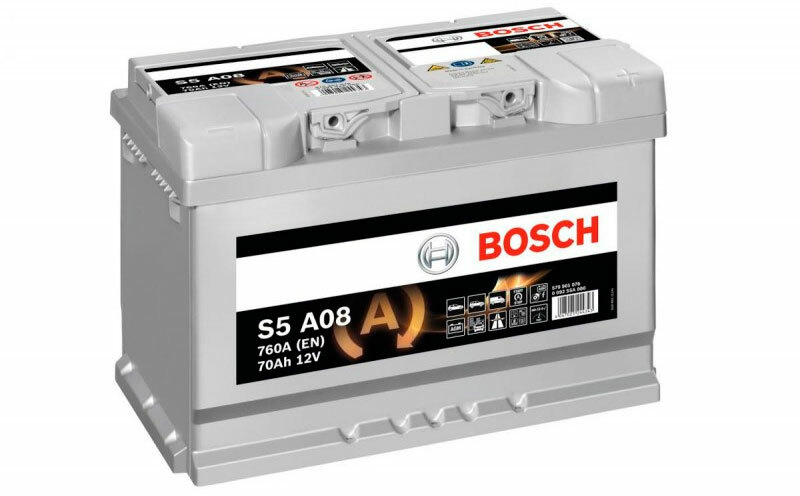
The plates of serviced batteries contain antimony lead in their composition.
Pros:
- Assume the possibility of adding or replacing the electrolyte. For this purpose, special filling holes are provided in their design.
- With timely and optimal maintenance, can last a long time.
- Low prices.
Cons:
- Models are not safe to operate( gases and acid).
- Requires ongoing maintenance.
Low-fume batteries
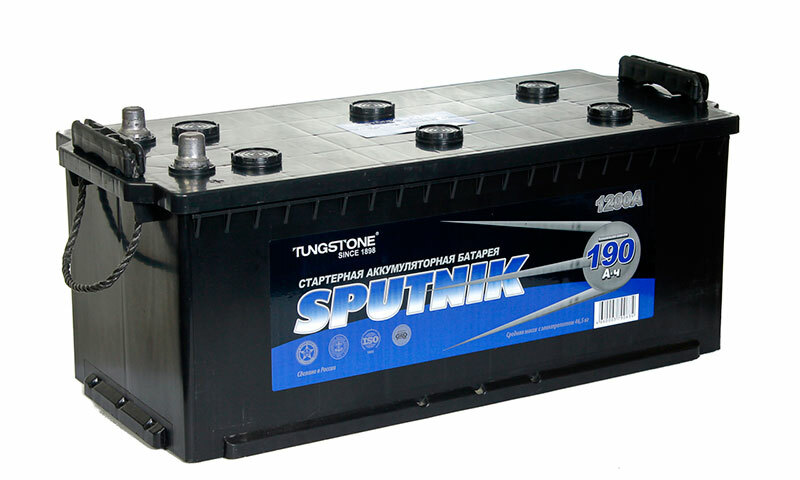
Such batteries have a lower content of antimony, due to which they have reduced the evaporation of water from the acid.
Pros:
- Periodicity of maintenance of such batteries is not as frequent as in previous products.
- Decreased self-discharge during storage.
- Resistant to power surges and surges in the vehicle's electrical system.
- This kind of battery is most preferable for use in domestic cars.
- Affordable price.
Cons:
- Need maintenance.
Calcium( maintenance-free) battery
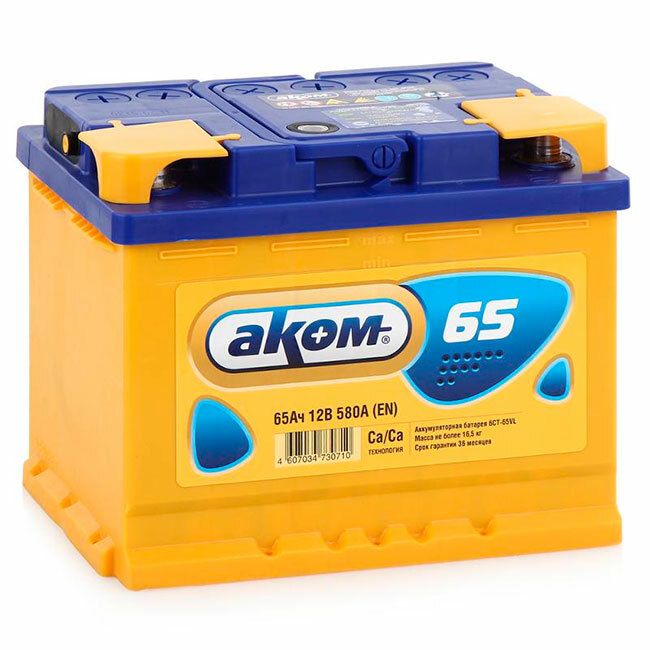
Pros:
- Have increased capacity and efficiency;
- Not serviced;
- Low self-discharge;
- There is practically no evaporation of water;
- Lower weight.
Cons:
- The prices for these batteries are higher than antimony products;
- Sensitive to deep discharges and voltage surges.
Hybrid( maintenance-free) batteries
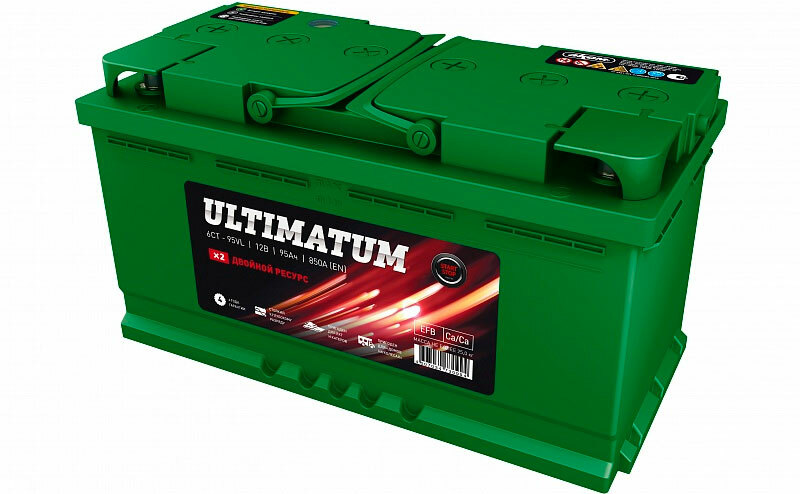
These batteries are positive plates made with an admixture of antimony, and negative - with the addition of calcium. The characteristics of their water consumption are average between low antimony and calcium batteries.
Pros:
- More resistant to voltage drops and discharges in the electric circuit of the car.
- Have a low self-discharge.
- Not available.
- Thanks to the high starter current, these batteries are easy to start at low temperatures.
Cons:
- Prices are higher than those of previous batteries.
AGM( maintenance-free) batteries
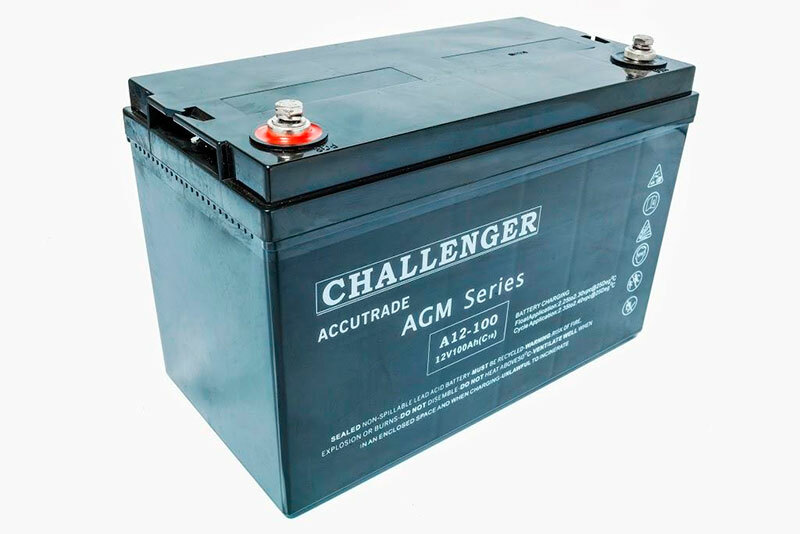
These batteries are filled with a gel-like mass made of microfiber impregnated with a solution of sulfuric acid. Flammable gases( oxygen and hydrogen) are "caught" by the pores of the gel and are again used.
Pros:
- Fireproof.
- Can work without problems at different angles of inclination.
- No liquid electrolyte.
- Very low self-discharge and extended service life.
- Not serviced.
Cons:
- Do not like big frosts.
- Works well only in high-class cars with high-quality electrical equipment.
- High price.
GEL( unattended) batteries

These batteries have the same parameters and properties as AGM products, but are slightly inferior to the cyclical use of gases.
Pros:
- Almost twice as long as the previous batteries. On some models, it reaches 10 years.
- Not serviced.
Cons:
- Poor performance at very low temperatures.
- High cost.
- It is better to use in high-class cars under moderate weather conditions.
EFB( maintenance-free) batteries
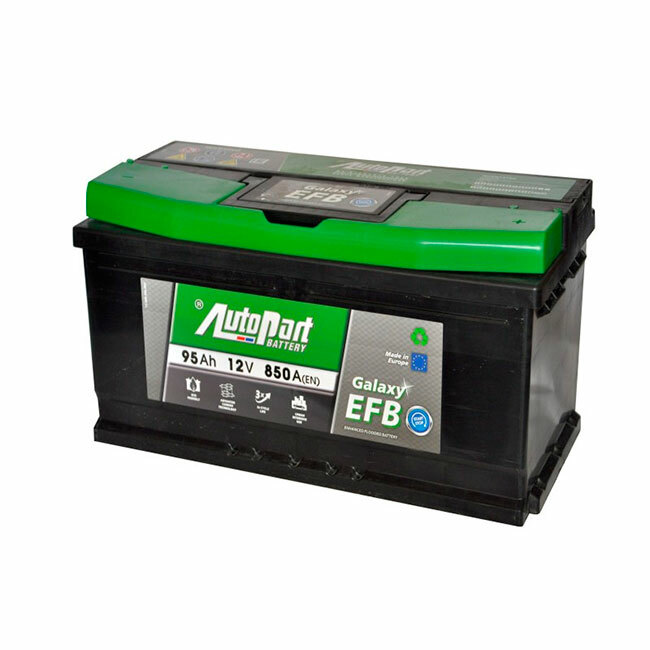
These products have increased capacity and a short charging time. This is achieved by increasing the thickness of the plates, which are enclosed in a special material made of microfiber, filled with electrolyte.
Pros:
- Have good resistance to deep discharges.
- Can be operated from minus 50 ° C to plus 60 ° C.
- Starting current parameters are increased.
- No maintenance required.
Cons:
- High price.
Battery selection parameters

What you should pay attention first of all before buying a battery:
1. You should determine the type of battery - serviced, maintenance-free, etc.
2. The dimensions of the battery must be commensurate with the place intended for its attachment in the car.
3. It is important to know which side of your machine should be located "plus" and "negative" terminals( terminals), that is, the polarity of the battery should be taken into account. It is straight - the "plus" is on the left. The reverse polarity - "plus" on the battery is placed on the right.
4. You need to know what is the nominal capacity( ampere-hour) of the battery - this is the energy given out for 20 hours with the discharge of the fully charged battery. This value for cars, depending on the engine power, varies from 40 to 70 A / h, and for more powerful trucks it can reach 200 A / h. The permissible capacity for your car is indicated in its documents.
5. Determine the starting current( A) that the battery can deliver at a temperature below minus 18 ° C in 10 seconds at a voltage of 7.5 V. If this parameter is high, starting the engine in winter at low temperatures will not be difficult. For an average machine, the starting current can be about 250 amperes. Its value for your car should be specified in the operating instructions.
6. For places with very cold winters, products with large starting currents can be used. For cars - up to 400-500 A. And for freight and this will be small. Do not be afraid, do not burn anything!
7. The main characteristics of the battery are indicated in the labeling of each battery. They are applied to its body.
8. Unlike the choice of household appliances( refrigerators, electric meat mincers, etc.), before purchasing a battery, you should carefully read the instruction manual for the machine where it will be used.
How much are rechargeable batteries

1. The cost of the battery will be another one of the defining parameters of your choice. It depends on the battery manufacturer, type, capacity, size and ease of maintenance. The price of batteries varies from 2500 to 15000 rubles and above.
2. Maintenance-free batteries are more reliable and safe. The operating parameters are much better for them than for the serviced models. But their cost, respectively, is higher than the price of older battery models.
3. Here, the choice will be yours. One should only remember that the desire to save a lot often leads to a decrease in your safety and sometimes can lead to irreparable harm to the "health" of your beloved car.


